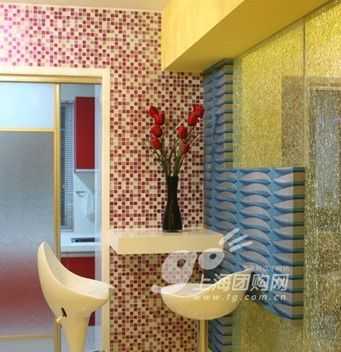In layman's terms, pottery vessels are called pottery and pottery vessels are used to make porcelain. Ceramics is the general name for pottery, crockery and porcelain. All the clays and china clay clays are used as raw materials. After the ingredients, molding, drying, roasting and other technological processes can be made of ceramics.

Brand Shop: Tiles
Ceramics include a wide range, some of which are water-resistant and some are acid-resistant. They are widely used in construction, chemical industry, electric power, machinery and other industrial and daily-use decoration, etc. In addition, other raw materials other than clay are used to manufacture ceramics. The manufactured products are also called ceramics, such as talc ceramics, cermets, capacitor ceramics, magnetic ceramics, etc. They are widely used in radio, atomic energy, rocket, semiconductor and other industries. At present, all ceramic products are generically referred to as "inorganic non-metallic solids. material.
Pottery and porcelain are daily commodities that people often come in contact with. Sometimes they look similar on the surface, but they all have their own characteristics and are different.
Pottery is generally made of clay as a child. The firing temperature of the pottery is generally between 900-1050°C. If the temperature is too high, the pottery will be burnt and deformed. Porcelain's carcass has a loose texture and many pores, so it has strong water absorption. The general pottery surface is unglazed, and even glazes are low temperature glazes.
The history of firing pottery in our country was about 10,000 years old. In the primitive society, pottery was first made into a certain shape by means of hand-kneading. Later, it was developed into clay strips of the same size as the clay, and then the clay strip was built into a certain shape, and its inner and outer parts were wiped by hand. . In the patriarchal stage, there was a round of rotation. After entering the feudal society, it invented the moulding method, that is to say, the clay was filled into the mould and the whole shape of the artifact was taken out. It has been speculated that the most primitive method of firing was the heaping method, which dried fired dried marble in open fireweed. Six thousand years ago, the use of pottery kiln firing pottery began.
According to the color of the pottery, cultural relics and archaeologists classify the pottery into red pottery, grey pottery, painted pottery, white pottery, painted pottery, black pottery, and glazed pottery.
The red pottery is the most common kind of pottery in primitive society. Its color is like red brick. This is when the kiln is fully supplied with gas to form an oxidizing atmosphere, so that the iron in the clay is converted into trivalent iron and it becomes red.
Gray pottery means that the pottery is gray or grayish black. This is in the latter stage of the kiln, controlling the heat and forming a reducing atmosphere. Due to the lack of oxygen in the kiln, the oxides of iron in the clay are converted into divalent iron, and the pottery is gray or black. Gray pottery is the most common and generally rough.
Painted pottery is the pottery before the kiln, in the pottery billet on the painting, after burning, there are black, white and other colors. The human-faced fish bowl at the Banpo site in Xi'an is one example.
White pottery, that is, white pottery, which was only found in the late Neolithic Age, was mainly due to the low content of iron oxide in pottery clay and the whiteness of some of the pigments was eliminated.
Painted pottery is also colored, and the difference between it and painted pottery is that the pottery is colored after firing. Since the color is not baked, it is not easily bonded to the green body and it easily falls off. Qin Terracotta Warriors and Horses unearthed in Xi'an belong to painted pottery.
Black pottery refers to the light and dark pottery mainly seen in the matriarchal social stage. This is the use of smoke in the late stage of roasting, so that the carbon particles in the smoke infiltration, filling the gaps of pottery, it can appear black. Some black pottery products have walls that are as thin as eggshells and are called "shell pottery" and are very precious.
Glazed pottery refers to a pot of lime-glazed pottery on the surface of pottery. The main components of the glaze are silica, alumina, calcium oxide, sodium oxide, etc. It can be made by adding lime and clay, and it is in a glassy state after being baked and melted. If some metal oxides, such as copper oxide and cobalt oxide, are added to the glaze, green and blue color will appear after firing. The common Tang Sancai is glazed pottery.
Buy Materials Glass Decorative Paint Red Brick Glass Tiles Process Glass Acid Resistant Tiles ld Tiles